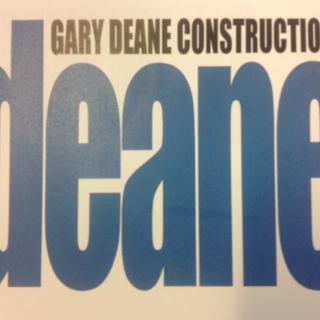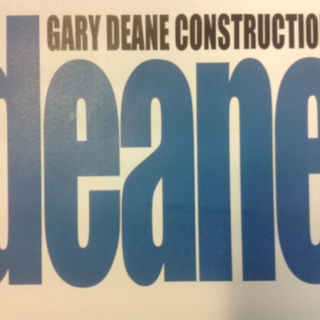Information
-
Audit Title
-
Client / Site
-
Conducted on
-
Prepared by
-
Location
-
Personnel
1. Inductions
-
1.1. Chase minimum 2 workers through induction, sign on and other registers.
-
1.2. Have all workers been inducted onto site and induction form completed correctly?
-
1.3. Have all workers listed their General Construction Induction cards (blue or white)?
-
1.4. Have all operators completed their Verification of Competency (VOC)?
-
1.5. Have all workers signed onto their respective SWMS?
2. Administrative Procedures
-
2.1. Is the PSEP current?
-
2.2. Are all permits (Council, EPA, WHS, Hot Works, Confined Space etc) current?
-
2.3. Lack or, or inadequate, supervisory arrangements?
-
2.4. Have all subcontractors SWMS been approved by the Safety Systems Manager?
-
2.5. Have incidents, injuries or near misses been reported to the Safety Systems Manager?
-
2.6. Has the Foreman completed weekly site inspections?
-
2.7. Has the Foreman completed Daily Site Pre-starts?
3. Personal Protective Equipment (PPE)
-
3.1. Is there sufficient and adequate PPE available (ear, eye, dust, head, sun protection)?
-
3.2. Is PPE being worn when required?
-
3.3 Has the PPE register been used?
4. Site Signage
-
4.1. Site signage in place?
-
4.2. PC identify site sign?
-
4.3. Site Office?
-
4.4. Danger, Construction Site, No Entry?
-
4.5. PPE Signs?
-
4.6. Speed limit?
-
4.7. UHF radio?
-
4.8. Turn on/off flashing light?
-
4.9. GDC site arrows?
-
4.10. Give Way/Stop?
-
4.11. Danger, Flammable Material?
-
4.12. Emergency Assembly Point?
-
4.13. Emergency Spill Kit?
-
4.14. First Aid?
-
4.15. Fire Extinguisher?
-
4.16. Danger, Laser In Use
-
4.17. Danger, Excavation?
-
4.18. Danger, Overhead Powerlines?
5. Work Environment/Site Security
-
5.1. Is site perimeter fencing sufficient?
-
5.2. Is the compound secure and safe?
-
5.3. Are site safety signs installed
-
5.4. Is site access clear (footpaths, roads etc)?
-
5.5. Are amenities adequate? (toilets, lunch rooms, water, etc)
-
5.6. Adequate housekeeping (overgrown grass, rubbish, storage areas clear)?
-
5.7. Is waste storage and removal adequate?
-
5.8. Are safety caps being used?
-
5.9. Are fire extinguishers tested and tagged?
-
5.10. Has electrical equipment been tested and tagged?
-
5.11. Sufficient lighting (night works, confined space)?
6. Environmental Hazards
-
6.1. Is the Environmental Management plan (EMP) completed in the PSEP?
-
6.2. Are sedimentation controls (silt fences, bunds, socks) correctly installed, monitored and appropriately located (drains, low areas, run offs)?
-
6.3. Are erosion controls (grass, matting) correctly installed, monitored and appropriately located?
-
6.4. Are sediment basins constructed correctly and appropriately controlled (flocking) and monitored?
-
6.5. Is dust exposure being managed?
-
6.6. Is a rumble grid in place and working?
-
6.7. Recycled water in use and permitted?
-
6.8. Clearing contained to site?
-
6.9. Spotter/catcher used when clearing or removal of wildlife?
-
6.10. Have fire ants been located?
-
6.11. Have fire ant inspections been carried out every 28 days?
7. Emergency Response
-
7.1. Is there emergency plan for site?
-
7.2. Are emergency procedures and numbers displayed at site?
-
7.3. Have workers undertaken emergency training and conducted a drill?
-
7.4. Is the a working air horn in the site office?
-
7.5. Is there adequate first aid kits/equipment for site?
-
7.6. Are there sufficient trained First Aiders for site?
8. Asbestos
-
8.1. Has asbestos or suspected asbestos been found on site?
-
8.2. Is there an Asbestos Management or Removal plan in place?
-
8.3. Has the affected area been barricaded and signs erected?
-
8.4. Has a licenced asbestos removalist been contracted to remove material?
-
8.5. Have all permits and certificates been obtained (transport and disposal)?
9. Hazardous Chemical (including fuel and oil)
-
9.1. Unsafe storage location? (e.g. flammables near ignition sources, spills could enter stormwater drains, etc)
-
9.2. Is there a sufficient spill kit on site?
-
9.3. Is the spill kit stocked (absorbent granules, socks, pads)?
-
9.4. Is the Safety Data Sheets folder accessible on site?
-
9.5. Lack of emergency procedures for injury/spills/fire etc?
-
9.6. Excessive quantities stored on site or in vehicles?
-
9.7. Insufficient ventilation?
-
9.8. Insufficient, or incorrect, PPE?
-
9.9. Unsuitable storage containers? (unlabeled or stored in food containers)
-
9.10. Have all spills been cleaned and reported?
10. Traffic Management
-
10.1. Is the Traffic Management Plan (TMP) in place?
-
10.2. Is traffic control required?
-
10.3. Are appropriate persons competent to implement and control TMP?
-
10.4. Are controls adequate for TMP? (physical barriers, bollards, speed limits, flashing lights, spotters, etc)
11. Plant and Equipment
-
11.1. Has a site pre-start inspection been carried out on mobile plant?
-
11.2. Has a daily pre-start inspection been carried out on mobile plant?
-
11.3. Have operators the required Verification of Competency (VOC)?
-
11.4. Have operators signed onto the required SWMS?
-
11.5. Is the plant/equipment safe to use?
-
11.6. Is the plant /equipment correct for job (correct size excavator, backhoe, buckets)?
-
11.7. Are the attachments used with plant/equipment safe?
-
11.8. Are ROPS/FOPS fitted where required?
-
11.9. Are reversing alarms fitted and in use?
-
11.10. Are warning lights fitted and in use?
-
11.11. Are safety pins used where required?
-
11.12. Are fire extinguishers fitted where applicable?
-
11.13. Is the procedure for using mobile plant as a crane being followed?
-
11.14. Has the mobile plant been cleaned, serviced and maintained?
12. Lifting Equipment
-
12.1. Unsafe or damaged plant?
-
12.2. Are loads lifted over persons, close proximity to obstacles incl. overhead power lines?
-
12.3. Lack of maintenance, testing and inspection?
-
12.4. Lack of SWL information displayed?
-
12.5. Lack of daily inspection protocol?
-
12.6. Unsafe or damaged lifting equipment, including ropes, slings, chains, hooks?
-
12.7. Lifting equipment unlabelled, does not meet AS, no SWL displayed?
-
12.8. Unlicensed operators?
-
12.9. SWL of plant or any lifting equipment exceeded?
-
12.10. Are any cranes, excavators, hoists or lifts being used on site?
13. Excavations and Trenching
-
13.1. Have underground services been identified and isolated where required?
-
13.2. Have all types of excavations been appropriately barricaded and signed? (parawebbing, temp fencing)?
-
13.3. Are workers wearing head protection where required (>1.5m or working with lifting plant)
-
13.4. Have all penetrations or manholes been covered?
-
13.5. Is the shoring appropriate to the work being undertaken (>1.5m)?
-
13.6. Is the benching appropriate to the work being undertaken (>1.5m)?
-
13.7. Is the battering appropriate for the works being undertaken (>1.5m)?
-
13.8. Has the Geo-tech Engineers approval being given where required?
-
13.9. Is the access into the excavation adequate (ladder every 9m)?
-
13.10. Is dewatering sufficient?
-
13.11. Is the excavation and trench instructions being followed?
-
13.12. Is pipe laying procedure ok?
14. Working at Heights
-
14.1. Fall risks of 2m or more? (including voids, pits, and trenches)
-
14.2. Lack of edge protection?
15. Scaffolds
-
15.1. Unlicensed persons erecting scaffold above 4m?
-
15.2. Mobile scaffold erected correctly and instruction followed?
-
15.3. Unsafe or incomplete scaffold?
-
15.4. Safe Work Load (SWL) exceeded? (tools, stored materials, number of persons)
16. Ladders
-
16.1. Unsafe or damaged ladders?
-
16.2. Unsafe positioning of ladders?
-
16.3. Ladder not properly secured?
-
16.4. Ladder unsuitable for job? (e.g. metal ladder used for electrical work)
17. Confined Space
-
17.1. Is confined space entry required?
-
17.2. Is confined space permit completed (R.A, SWMS, emergency plan, controls)?
-
17.3. Are all confined space workers qualified and trained?
-
17.4. Are there a minimum 3 confined space persons allocated to the works?
-
17.5. Has a 'person in control' been nominated and undertaking their duties?
-
17.6. Has a 'spotter' been nominated and undertaking their duties?
-
17.7. Do the workers have the appropriate equipment including PPE and emergency response (tripod, harness, torch, hard hat)?
-
17.8. Has air/gas monitoring been conducted prior to and during entry?
-
17.9. Has a toolbox talk been carried out?
-
17.10. Have all workers signed in and out of confined space?
18. Harness and Equipment
-
18.1. Unsafe or damaged harness or equipment?
-
18.2. Incompatible hooks/equipment?
-
18.3. Unlabelled or does not meet AS?
-
18.4. Unsafe or uncertified anchor points?
-
18.5. Lack of inspection protocol for equipment?
-
18.6. Lack of or inadequate formal training for operators?
19. Electrical Hazards
-
19.1. Is there the risk of contacting underground assets?
-
19.2. Is there the risk of contacting overhead electrical lines?
-
19.3. Have DBYD permits been obtained and communicated?
-
19.4. Are all electrical leads and tools in good condition?
-
19.5. Have all electrical leads and tools been tested and tagged?
-
19.6. Is RCD protection being used?
-
19.7. Has piggy backing or double adapters been conducted?
-
19.8. Have leads placed on ground or on metal structures, water or hazardous areas?
20. Lasers
-
20.1. Are Class 1 to 3A lasers in use and being used correctly (LSO not required)?
-
20.2. Are Class 3B and above lasers being in use and being used correctly (LSO required)?
-
20.3. Are appropriate signs erected?
21. Other Issues
-
21.1.
-
21.2.
20. Corrective Actions
-
Enter any corrective actions that will be undertaken
Sign Off
-
On site representative
-
Auditor's signature







